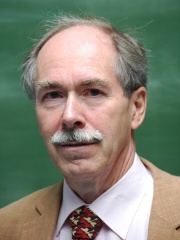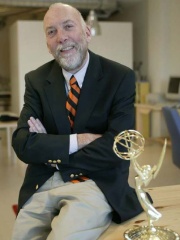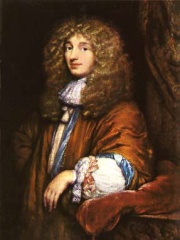
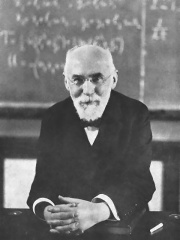
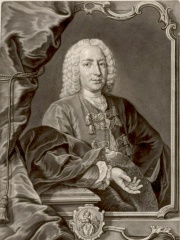
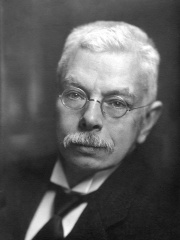
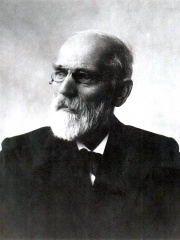

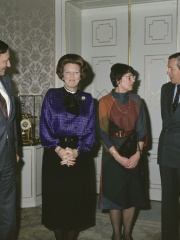
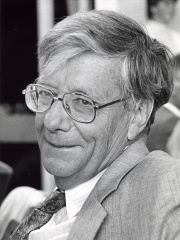
The Most Famous
PHYSICISTS from Netherlands
This page contains a list of the greatest Dutch Physicists. The pantheon dataset contains 851 Physicists, 25 of which were born in Netherlands. This makes Netherlands the birth place of the 7th most number of Physicists behind Russia, and Italy.
Top 10
The following people are considered by Pantheon to be the top 10 most legendary Dutch Physicists of all time. This list of famous Dutch Physicists is sorted by HPI (Historical Popularity Index), a metric that aggregates information on a biography's online popularity. Visit the rankings page to view the entire list of Dutch Physicists.

1. Christiaan Huygens (1629 - 1695)
With an HPI of 82.04, Christiaan Huygens is the most famous Dutch Physicist. His biography has been translated into 100 different languages on wikipedia.
Christiaan Huygens, Lord of Zeelhem, ( HY-gənz, US also HOY-gənz; Dutch: [ˈkrɪstijaːn ˈɦœyɣə(n)s] ; also spelled Huyghens; Latin: Hugenius; 14 April 1629 – 8 July 1695) was a Dutch mathematician, physicist, engineer, astronomer, and inventor who is regarded as a key figure in the Scientific Revolution. In physics, Huygens made seminal contributions to optics and mechanics, while as an astronomer he studied the rings of Saturn and discovered its largest moon, Titan. As an engineer and inventor, he improved the design of telescopes and invented the pendulum clock, the most accurate timekeeper for almost 300 years. A talented mathematician and physicist, Huygens authored the first modern treatise where a physical problem was idealized using mathematical parameters, while his work on light contains the first mathematical and mechanistic explanation of an unobservable physical phenomenon. Huygens first identified the correct laws of elastic collision in his work De Motu Corporum ex Percussione, completed in 1656 but published posthumously in 1703. In 1659, Huygens derived geometrically the formula in classical mechanics for the centrifugal force in his work De vi Centrifuga, a decade before Isaac Newton. In optics, he is best known for his wave theory of light, which he described in his Traité de la Lumière (1690). His theory of light was initially rejected in favour of Newton's corpuscular theory of light, until Augustin-Jean Fresnel adapted Huygens's principle to give a complete explanation of the rectilinear propagation and diffraction effects of light in 1821. Today this principle is known as the Huygens–Fresnel principle. Huygens invented and patented the pendulum clock in 1657, which was manufactured in Paris by Isaac II Thuret. Huygens's horological research led to an extensive analysis of the pendulum in Horologium Oscillatorium (1673), regarded as one of the most important 17th-century works on mechanics. While it contains descriptions of clock designs, most of the book is an analysis of pendular motion and a theory of curves. In 1655, Huygens began grinding lenses with his brother Constantijn to build refracting telescopes. He discovered Saturn's biggest moon, Titan, and was the first to explain Saturn's strange appearance as due to "a thin, flat ring, nowhere touching, and inclined to the ecliptic." In 1662, he developed what is now called the Huygenian eyepiece, a telescope with two lenses to diminish the amount of dispersion. As a mathematician, Huygens developed his theory of evolutes and wrote on games of chance and the problem of points in Van Rekeningh in Spelen van Gluck, which Frans van Schooten translated and published as De Ratiociniis in Ludo Aleae (1657). The use of expected values by Huygens and others would later inspire Jacob Bernoulli's work on probability theory.

2. Hendrik Lorentz (1853 - 1928)
With an HPI of 81.81, Hendrik Lorentz is the 2nd most famous Dutch Physicist. His biography has been translated into 104 different languages.
Hendrik Antoon Lorentz ( LAWR-uhnts, LOHR-, LOH-rents; Dutch: [ˈɦɛndrɪk ˈɑntoːn ˈloːrɛnts]; 18 July 1853 – 4 February 1928) was a Dutch theoretical physicist who shared the 1902 Nobel Prize in Physics with Pieter Zeeman for their discovery and theoretical explanation of the Zeeman effect. He derived the Lorentz transformation of the special theory of relativity, as well as the Lorentz force, which describes the force acting on a charged particle in an electromagnetic field. He was also responsible for the Lorentz oscillator model, a classical model used to describe the anomalous dispersion observed in dielectric materials when the driving frequency of the electric field was near the resonant frequency of the material, resulting in abnormal refractive indices. Lorentz received many other honors and distinctions, including a term as Chairman of the International Committee on Intellectual Cooperation, the forerunner of UNESCO, from 1925 until his death in 1928.

3. Daniel Bernoulli (1700 - 1782)
With an HPI of 80.97, Daniel Bernoulli is the 3rd most famous Dutch Physicist. His biography has been translated into 81 different languages.
Daniel Bernoulli ( bur-NOO-lee; Swiss Standard German: [ˈdaːni̯eːl bɛrˈnʊli]; 8 February [O.S. 29 January] 1700 – 27 March 1782) was a Swiss mathematician and physicist and was one of the many prominent mathematicians in the Bernoulli family from Basel. He is particularly remembered for his applications of mathematics to mechanics, especially fluid mechanics, and for his pioneering work in probability and statistics. His name is commemorated in the Bernoulli's principle, a particular example of the conservation of energy, which describes the mathematics of the mechanism underlying the operation of two important technologies of the 20th century: the carburetor and the aeroplane wing.

4. Pieter Zeeman (1865 - 1943)
With an HPI of 80.53, Pieter Zeeman is the 4th most famous Dutch Physicist. His biography has been translated into 98 different languages.
Pieter Zeeman ( ZAY-mahn; Dutch: [ˈzeːmɑn] ; 25 May 1865 – 9 October 1943) was a Dutch experimental physicist who shared the 1902 Nobel Prize in Physics with Hendrik Lorentz for their discovery and theoretical explanation of the Zeeman effect.
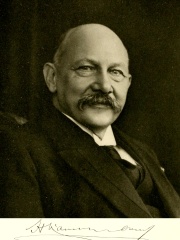
5. Heike Kamerlingh Onnes (1853 - 1926)
With an HPI of 78.07, Heike Kamerlingh Onnes is the 5th most famous Dutch Physicist. His biography has been translated into 89 different languages.
Heike Kamerlingh Onnes (Dutch: [ˈɦɛikə ˈkaːmərlɪŋ ˈɔnəs]; 21 September 1853 – 21 February 1926) was a Dutch experimental physicist who became the first to liquefy helium, cooling it to near 1.5 kelvin (K). For this work, he was awarded the Nobel Prize in Physics in 1913. In 1911, using liquid helium to investigate the electrical conductivity of solid mercury, Kamerlingh Onnes found that its electrical resistance vanishes at 4.2 K, i.e. superconductivity.

6. Johannes Diderik van der Waals (1837 - 1923)
With an HPI of 77.51, Johannes Diderik van der Waals is the 6th most famous Dutch Physicist. His biography has been translated into 95 different languages.
Johannes Diderik van der Waals (Dutch: [joːˈɦɑnəz ˈdidərɪk fɑn dər ˈʋaːls] ; 23 November 1837 – 8 March 1923) was a Dutch theoretical physicist who received the Nobel Prize in Physics in 1910 "for his work on the equation of state for gases and liquids". Van der Waals started his career as a schoolteacher. He became the first physics professor of the University of Amsterdam when its status was upgraded to Municipal University in 1877. His name is primarily associated with the van der Waals equation, an equation of state that describes the behavior of gases and their condensation to the liquid phase. His name is also associated with van der Waals forces (forces between stable molecules), with van der Waals molecules (small molecular clusters bound by van der Waals forces), and with the van der Waals radius (size of molecules). James Clerk Maxwell once said that, "there can be no doubt that the name of Van der Waals will soon be among the foremost in molecular science." In his 1873 thesis, Van der Waals noted the non-ideality of real gases and attributed it to the existence of intermolecular interactions. He introduced the first equation of state derived by the assumption of a finite volume occupied by the constituent molecules. Spearheaded by Ernst Mach and Wilhelm Ostwald, a strong philosophical current that denied the existence of molecules arose towards the end of the 19th century. The molecular existence was considered unproven and the molecular hypothesis unnecessary. At the time Van der Waals's thesis was written (1873), the molecular structure of fluids had not been accepted by most physicists, and liquid and vapor were often considered as chemically distinct. But Van der Waals's work affirmed the reality of molecules and allowed an assessment of their size and attractive strength. His new formula revolutionized the study of equations of state. By comparing his equation of state with experimental data, Van der Waals was able to obtain estimates for the actual size of molecules and the strength of their mutual attraction. The effect of Van der Waals's work on molecular physics in the 20th century was direct and fundamental. By introducing parameters characterizing molecular size and attraction in constructing his equation of state, Van der Waals set the tone for modern molecular science. That molecular aspects such as size, shape, attraction, and multipolar interactions should form the basis for mathematical formulations of the thermodynamic and transport properties of fluids is presently considered an axiom. With the help of the Van der Waals's equation of state, the critical-point parameters of gases could be accurately predicted from thermodynamic measurements made at much higher temperatures. Nitrogen, oxygen, hydrogen, and helium subsequently succumbed to liquefaction. Heike Kamerlingh Onnes was significantly influenced by the pioneering work of Van der Waals. In 1908, Onnes became the first to make liquid helium; this led directly to his 1911 discovery of superconductivity.

7. Peter Debye (1884 - 1966)
With an HPI of 75.71, Peter Debye is the 7th most famous Dutch Physicist. His biography has been translated into 75 different languages.
Peter Joseph William Debye ( dib-EYE; born Petrus Josephus Wilhelmus Debije, Dutch: [ˈpeːtrʏz dəˈbɛiə]; March 24, 1884 – November 2, 1966) was a Dutch-American physicist and physical chemist, and Nobel laureate in Chemistry.

8. Simon van der Meer (1925 - 2011)
With an HPI of 74.74, Simon van der Meer is the 8th most famous Dutch Physicist. His biography has been translated into 72 different languages.
Simon van der Meer (24 November 1925 – 4 March 2011) was a Dutch particle accelerator physicist who shared the Nobel Prize in Physics in 1984 with Carlo Rubbia for contributions to the CERN project which led to the discovery of the W and Z particles, the two fundamental communicators of the weak interaction.

9. Nicolaas Bloembergen (1920 - 2017)
With an HPI of 73.93, Nicolaas Bloembergen is the 9th most famous Dutch Physicist. His biography has been translated into 74 different languages.
Nicolaas Bloembergen (March 11, 1920 – September 5, 2017) was a Dutch-American physicist and Nobel laureate, recognized for his work in developing driving principles behind nonlinear optics for laser spectroscopy. During his career, he was a professor at Harvard University and later at the University of Arizona and at Leiden University in 1973 (as Lorentz Professor). Bloembergen shared the 1981 Nobel Prize in Physics along with Arthur Schawlow and Kai Siegbahn because their work "has had a profound effect on our present knowledge of the constitution of matter" through the use of laser spectroscopy. In particular, Bloembergen was singled out because he "founded a new field of science we now call non-linear optics" by mixing "two or more beams of laser light... in order to produce laser light of a different wave length" and thus significantly broaden the laser spectroscopy frequency band.
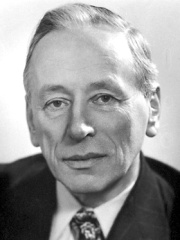
10. Frits Zernike (1888 - 1966)
With an HPI of 73.57, Frits Zernike is the 10th most famous Dutch Physicist. His biography has been translated into 73 different languages.
Frits Zernike (Dutch: [frɪt ˈsɛrnikə]; 16 July 1888 – 10 March 1966) was a Dutch physicist who received the Nobel Prize in Physics in 1953 for his invention of the phase-contrast microscope.
People
Pantheon has 25 people classified as Dutch physicists born between 1629 and 1960. Of these 25, 3 (12.00%) of them are still alive today. The most famous living Dutch physicists include Gerard 't Hooft, Kees Schouhamer Immink, and Robbert Dijkgraaf. The most famous deceased Dutch physicists include Christiaan Huygens, Hendrik Lorentz, and Daniel Bernoulli. As of April 2024, 1 new Dutch physicists have been added to Pantheon including Robbert Dijkgraaf.
Living Dutch Physicists
Go to all RankingsGerard 't Hooft
1946 - Present
HPI: 68.92
Kees Schouhamer Immink
1946 - Present
HPI: 51.25
Robbert Dijkgraaf
1960 - Present
HPI: 49.28
Deceased Dutch Physicists
Go to all RankingsChristiaan Huygens
1629 - 1695
HPI: 82.04
Hendrik Lorentz
1853 - 1928
HPI: 81.81
Daniel Bernoulli
1700 - 1782
HPI: 80.97
Pieter Zeeman
1865 - 1943
HPI: 80.53
Heike Kamerlingh Onnes
1853 - 1926
HPI: 78.07
Johannes Diderik van der Waals
1837 - 1923
HPI: 77.51
Peter Debye
1884 - 1966
HPI: 75.71
Simon van der Meer
1925 - 2011
HPI: 74.74
Nicolaas Bloembergen
1920 - 2017
HPI: 73.93
Frits Zernike
1888 - 1966
HPI: 73.57
Martinus J. G. Veltman
1931 - 2021
HPI: 72.82
Jan Ingenhousz
1730 - 1799
HPI: 66.07
Newly Added Dutch Physicists (2025)
Go to all RankingsOverlapping Lives
Which Physicists were alive at the same time? This visualization shows the lifespans of the 21 most globally memorable Physicists since 1700.

